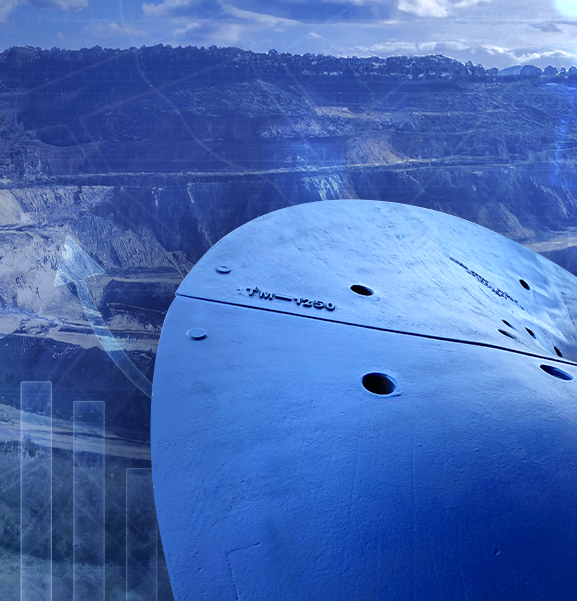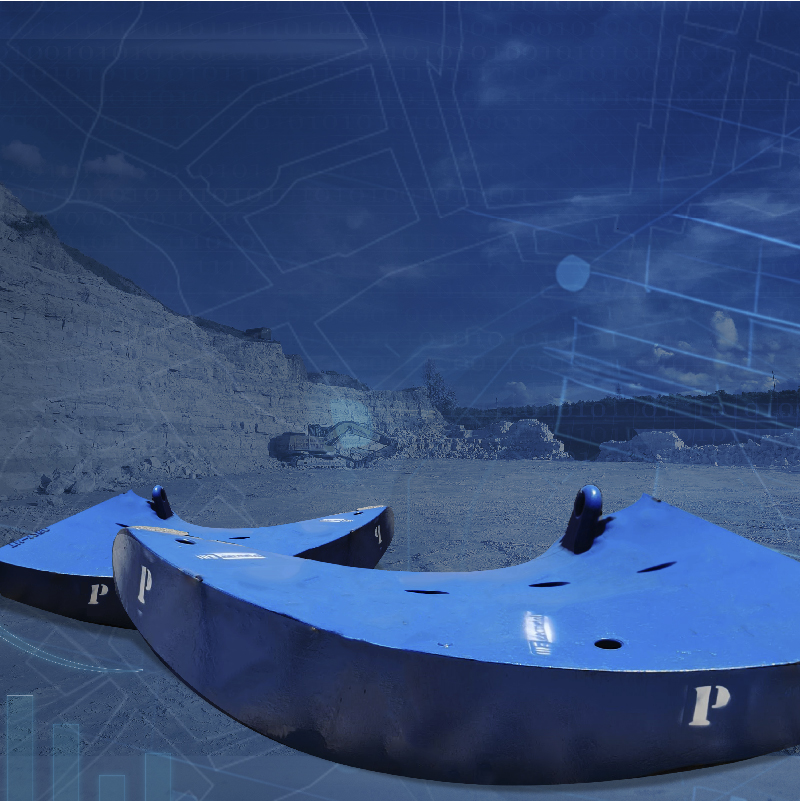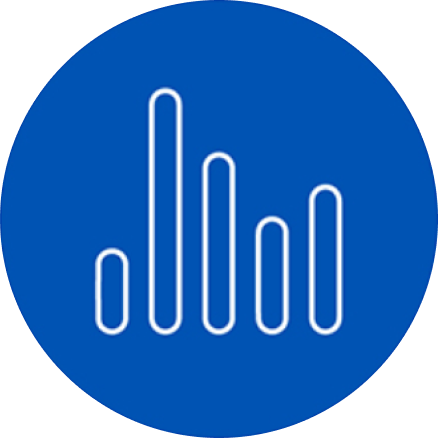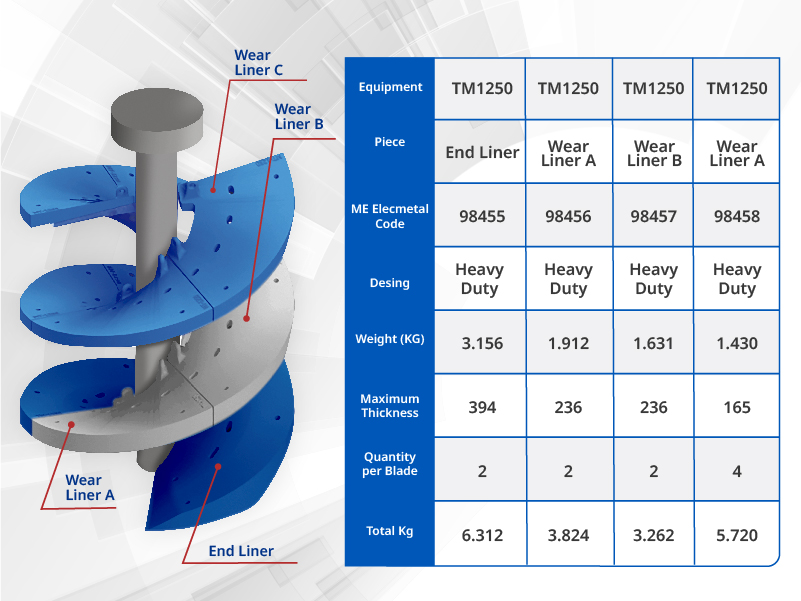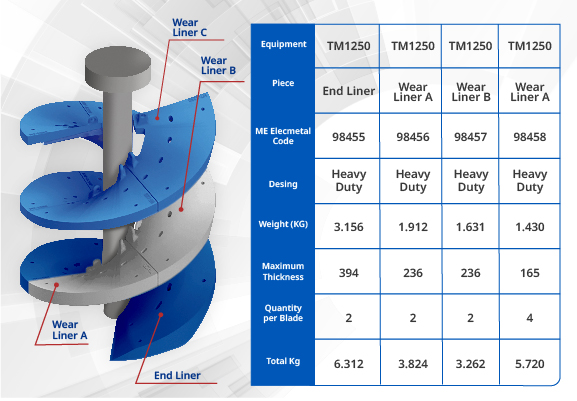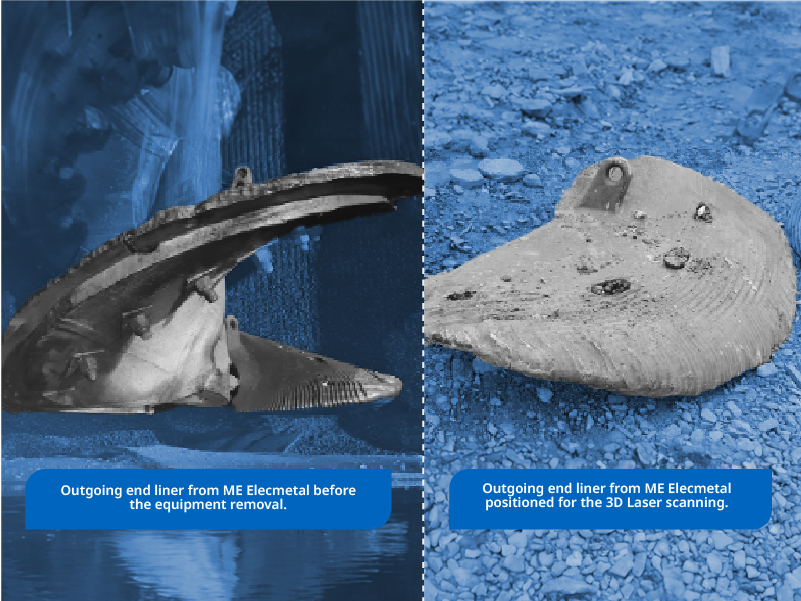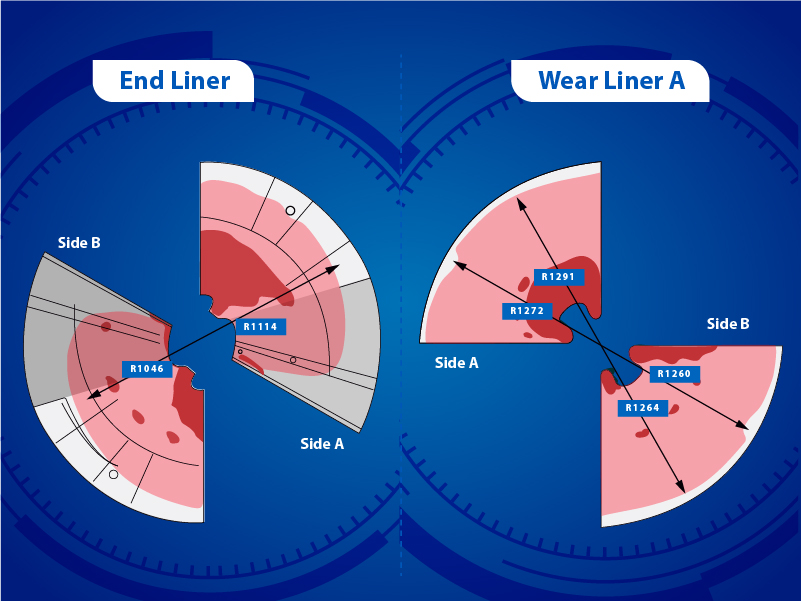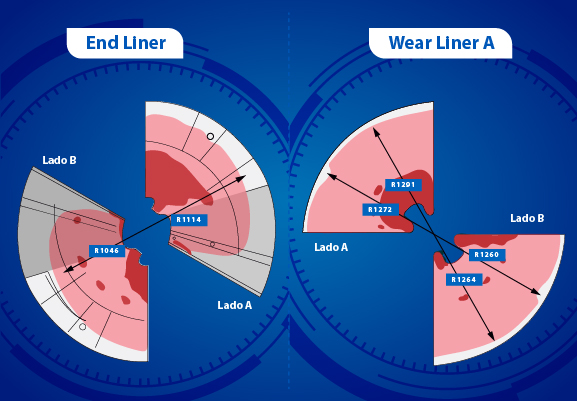Below is the table summarizing the test results for the mill operating for 3,860 effective hours:
| Liner |
Nominal radius (mm) |
Worn critical radius (mm) |
Total wear (mm) |
Wear rate (mm/hour) |
| End Liner side A |
1.353 |
1.114 |
239 |
0,062 |
| End Liner side B |
1.353 |
1.046 |
307 |
0,079 |
| Wear Liner A side A |
1.353 |
1.260 |
93 |
0,024 |
| Wear Liner A side B |
1.353 |
1.272 |
81 |
0,021 |
In general, all the components manage to safeguard the maximum allowable wear towards the blade up to 1,000 mm at the critical radius. Despite operating 24% more effective hours, the critical radius with which the components came out was 5% greater at the tip that experienced the most wear, ending up with a remaining critical radius of 1,046 mm.
| Liner |
Standard end Liner Design |
Heavy-Duty End Liner Side A |
Heavy-Duty End Liner Side B |
| Effective operating hours (hours) |
3.110 |
3.860 (+24%) |
3.860 (+24%) |
| Initial lining radius (mm) |
1.353 |
1.353 |
1.353 |
| Maximum recommended radius (mm) |
1.000 |
1.000 |
1.000 |
| Final campaign radius (mm) |
999 |
1.114 (+12%) |
1.046 (+5%) |
| Desgaste total (mm) |
354 |
239 |
307 |
| Wear rate (mm/hour) |
0,1138 |
0,0619 (-46%) |
0,0795 (-30%) |
The following results are obtained:
- The tested end liners operated 24% more effective hours than the standard design end liners in the previous campaign.
- Side A end liner was left with a radius 12% larger than the standard design end liner.
- Side B end liner was left with a radius 5% larger than the standard design end liner.
- The Heavy Duty end liner on Side A successfully safeguards 100% of the mill’s curvature, as it still had 114 mm remaining before reaching the recommended critical radius for replacement.
- The Heavy Duty end liner on Side B successfully safeguards 100% of the mill’s curvature, as it still had 46 mm remaining before reaching the recommended critical radius for replacement.
- Compared to the nominal condition, wear rates decreased by 46% and 30% for ME Elecmetal end liners A and B, accordingly.
According to the wear generated in this campaign and based on a linear projection of it, it is estimated that the components could have been operating for about 4,500 effective hours. Compared to the previous situation, this means it would have achieved the ambitious goal of reaching a 50% effective increase in the components lifespan.
![]()

